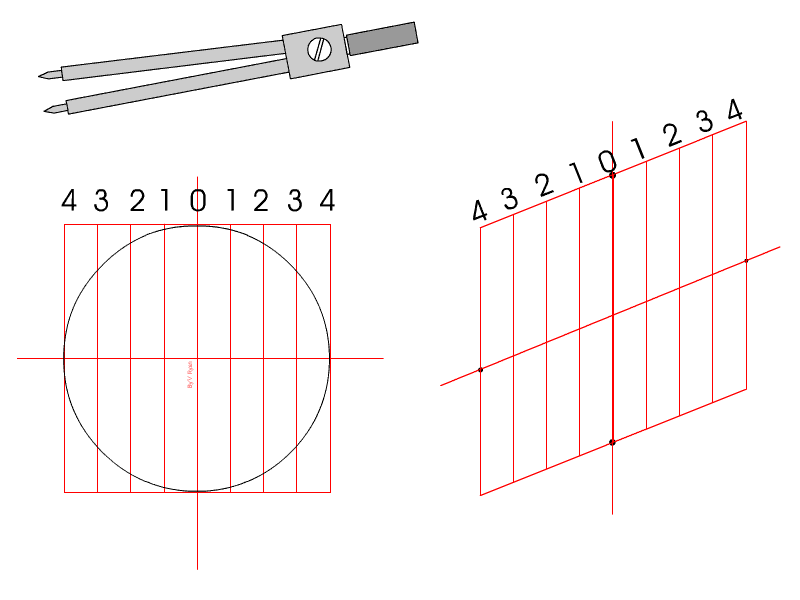|
ISOMETRIC CIRCLES AND CYLINDERS V. Ryan © 2002 - 2010
|
|
| PDF FILE - CLICK HERE FOR PRINTABLE EXERCISE BASED ON WORK SEEN BELOW | |
 |
|
|
ISOMETRIC CIRCLES AND CYLINDERS V. Ryan © 2002 - 2010
|
|
| PDF FILE - CLICK HERE FOR PRINTABLE EXERCISE BASED ON WORK SEEN BELOW | |
 |
|
|
|
Drawing a basic isometric shape such as cube can be difficult the first time you attempt to draw it using a T-Square and 30 degree Set Square. However, after a few attempts the technique for drawing them can be mastered quite easily. On the other hand - isometric circles and cylinders are more difficult and drawing them requires practice. The sequence for drawing both is shown below: |
|
|
A CYLINDER DRAWN IN ISOMETRIC PROJECTION |
||
|
|
1. Draw the original circle with a compass and enclose it in a box. Add vertical and horizontal guidelines |
|
|
|
2. Number the vertical lines (these are called 'ordinate lines') as shown on the diagram opposite. |
|
|
|
3. Draw the grid in isometric using a 30 degree set square, being careful to use the same measurements as the original grid which surrounds the circle. |
|
|
|
|
4. To draw the circle in isometric projection simply measure each distance down each vertical line on the normal grid and transfer it to the isometric grid. On the diagrams opposite - distance 'x' on guideline 3 has been transferred to the isometric grid. This is repeated for each of the guidelines 1,2, and 4. |
|
|
|
5. Continue around the isometric circle 'plotting' transferring distances from the original grid to the isometric grid - until the circle is complete. |
|
PRODUCING A CYLINDER SHAPE IN ISOMETRIC |
||
|
|
6.
Having successfully drawn the isometric circle developing it further
to change it into a cylinder is relatively easy. Draw 30 degree guidelines out from the isometric circle as shown in the diagram |
|
|
|
7. Measure the distance representing the 'thickness' of the cylinder along each 30 degree guideline. Start drawing a curve through each of the points. |
|
|
|
|
8. Draw the curve through each of the points to produce the final cylinder shade. |
| 1. Draw an isometric
circle. The original circle has a diameter of 40mm 2. Draw a cylinder similar to the one shown above. The original circle has a diameter of 45mm and the cylinder thickness must be 30mm. |
||
|
|
||